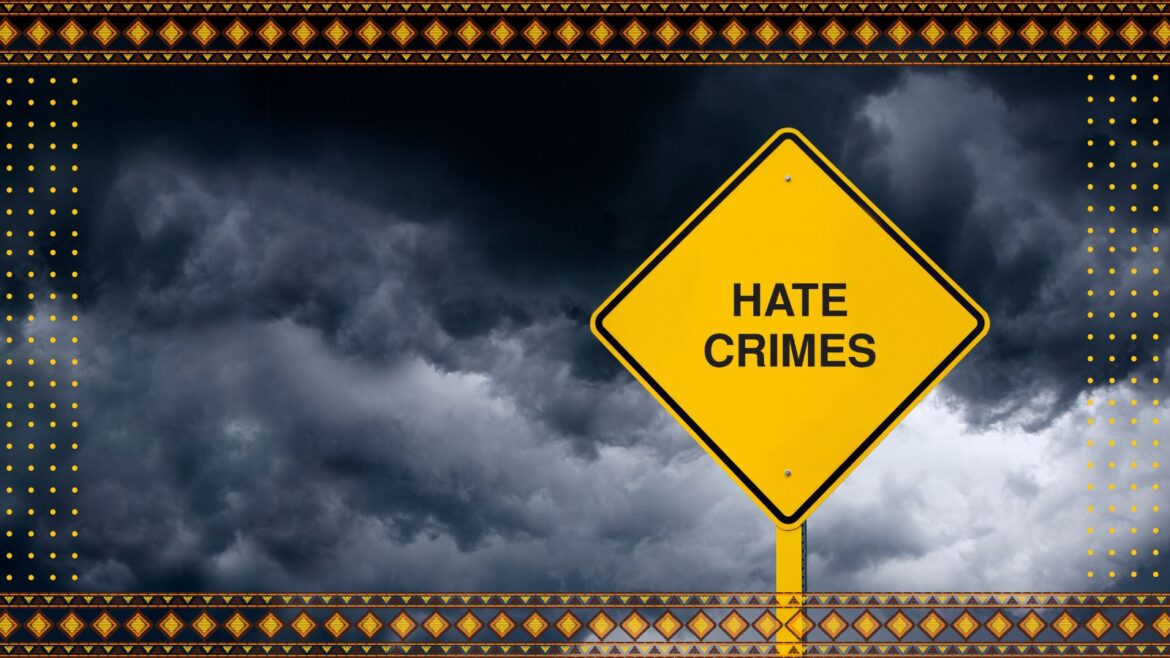Hate crimes in Los Angeles County surged in 2022, with attacks targeting a wide spectrum of racial and ethnic, religious, and sexual minorities. The increase is attributed in part to a rise in reporting locally, but also tracks wider state, national and even global trends.
The latest data comes from LA County’s Commission on Human Relations, which just released its Hate Crime Report for 2022.
“Reported hate crimes in Los Angeles County have reached the second highest level in more than 20 years,” said Executive Director Robin Toma, speaking at a press conference Wednesday announcing the release of the report. “Nearly every race, ethnicity, nationality, and religion has been targeted.”
In all, there were 929 hate crimes reported across the county in 2022, an increase of 18% over the year prior. (Statewide California reported an increase of 22%.) Of the total, 72% were violent, with race being the motivating factor in 57% of attacks.
African Americans were disproportionately represented among victims at 53%. Attacks targeting Latinos rose 3%, though 93% of these were violent, the highest of all racial-ethnic groups. Anti-Asian crimes fell by 25%, though the 61 crimes reported still marked the highest ever on record.
Eighteen percent of attacks were motivated by sexual orientation followed by those motivated by religious identification (16%). Of the latter, 83% were anti-Jewish, with the ongoing Israel-Palestine conflict fueling an even greater spike in antisemitic and anti-Muslim attacks since fighting began this October.
As reporting increases, so does the hate
Toma said increased reporting through the county’s LA vs Hate website and to 211 LA, where victims can call in to report hate crimes and hate related incidents anonymously and in a multitude of languages, have led to higher overall numbers, though he acknowledged the numbers – as high as they are – represent “only a handful” of the actual total.
According to the U.S. Department of Justice, nearly half of all violent hate crimes are not reported to law enforcement, while an even greater portion of hate incidents and nonviolent hate crimes are not reported. Reasons include fear of engaging with or lack of trust in law enforcement, as well as concerns that reporting could invite further attacks.
Toma also described a wider atmosphere of rising intolerance and extremism as helping to fuel the increase in hate in Los Angeles. He ticked off a grim list of incidents, including racially motivated mass shootings in Atlanta, Pittsburgh, El Paso, and the May 2022 mass shooting in Buffalo, New York that claimed 10 lives.
The latter, he noted, was linked to an incident involving an adult white male who targeted an African American teenager, making repeated phone calls and texts warning of his association with the Ku Klux Klan. The perpetrator sent multiple images of firearms, threatening a mass shooting like the one in Buffalo.
“This is an example of how hate and violence outside informs violence in the county,” said Toma.
‘Hate has no boundaries’
LA’s Commission on Human Relations has been tracking hate crime data since 1980. A hate crime is defined as any crime motivated by bias against race, color, religion, national origin, sexual orientation, gender, gender identity, or disability.
“Hate has no boundaries,” said LA County Supervisor Hilda Solis. “What we are seeing is a trend across the country and globe … Hate crimes continue to swell.”
It was Solis, along with Supervisor Sheila Keuhl, who in 2018 drafted a measure aimed at protecting LA’s minority communities from hate crimes. That measure ultimately led to the creation of the LA vs Hate anti-hate initiative. Led by the Human Relations Commission, LA vs Hate works with a coalition of community partners to track and combat hate across LA County.
Visitors to the site will find an array of available resources and can also report hate crimes or hate related incidents. According to Toma, the LA v Hate site is now the 3rd largest source of reported hate crimes after the LAPD and the Sheriff’s office.
“We have a lot of challenges, but the good thing is we are collecting the data,” said Solis, data that is used to help divert critical funding to anti-hate initiatives, including training for law enforcement, as well as education, data collection and coalition building efforts.
Reporting key to combating hate
LA County Sheriff Robert Luna emphasized his department’s commitment to combating the rise in hate and stressed the importance of coming forward when it happens. “When there is an attack of hate, it threatens the entire community,” Luna said. “When someone doesn’t report it, it feeds into the hands of the perpetrators.”
The LA County Sherriff’s office is one of the only ones in the country that tracks non-criminal hate incidents, explained Luna, noting that doing so “gives the community a voice when hate does not reach the level of a crime” and that it also helps to “prevent acts of hate before they occur.”
LAPD Assistant Chief Blake Chow echoed Luna. “We have to report. If people don’t report, we don’t know what’s going on.”
He also offered this reminder about the numbers contained in the report.
“Each one of these numbers is attached to a victim … to a family,” he said. “This is a commentary on where we are as a society.”
Source: Published without changes from Ethic Media Services




